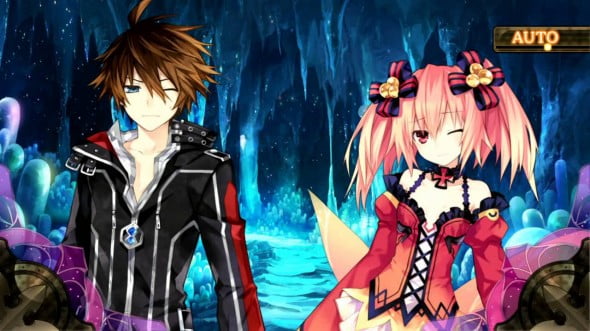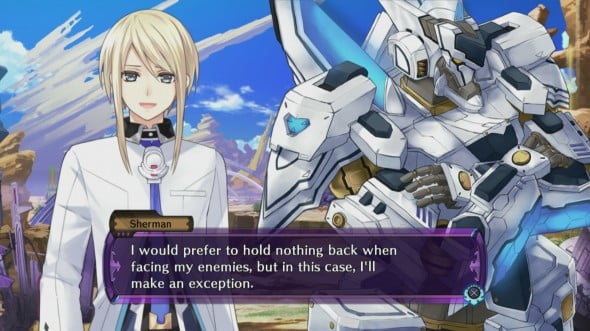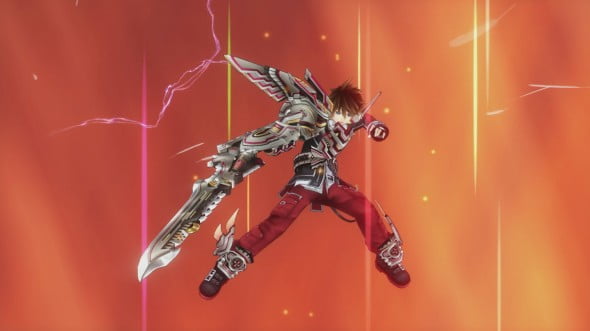Developer: Compile Heart
Publisher: NIS America
Review Platform: PlayStation 3
Review Copy Provided By: NIS America
Release Date: September 16, 2014
When it comes to many JRPGs, the situation is that the age range for the games tends to be on the younger side. The main characters are often teenagers with nothing better to do, or accidentally trip into a major quest to save the world. As such, it gets harder and harder for older players to sympathize with the characters; a lot of them whine about romance, or why they were chosen, and many things like that. And, on top of that, a lot of them end up having upbeat stories with very little development of the characters.
When it comes to Fairy Fencer F, the game starts out like that; lots of humor between the characters, and many side quests that make you chuckle softly to yourself and shake your head about how ridiculous these characters are. Because, at the beginning, these characters are nothing more than caricatures; the main character, Fang, spends the entire first part of the game wanting food, for example. In fact, he ends up in the plot of the game because he’s hungry, and pulls a sword out of the ground because he’s told it will grant him a wish – and his wish is food. Tiara as well is a typical tsundere, “holier-than-thou” character, which makes you yearn for actual characters. She spends a good portion of the first part ordering Fang and his fairy around to do her bidding.

The great thing about the game, however, is that these jokes stay just long enough to get tired, and then the tone of the game shifts. Suddenly, we’re in the middle of a hardened plot, and these fun-loving characters take a turn for the worst. And it’s not like it comes out of nowhere; you can sort of sense this tonal shift from the beginning of the game, and it keeps you hooked in until it actually occurs. And, from there, nothing is the same.
Definitely not the characters. Fang, the completely immature protagonist who neither deserves nor wants the leadership position he’s forced into, changes drastically through the game. He goes from a character who finds being a prisoner as “heavenly”, due to the fact that the only thing he has to do is eat and sleep – to being a hardened protagonist, fighting for what’s right, and knowing what decisions must be made. Which isn’t even random; as far as the first fight in the game, he shows a lot of apprehension towards fighting other people and harming them, an aspect of a character’s development I haven’t even really seen since Tales of the Abyss.

One problem I have with the game, however, is the treatment of the female characters. Almost all of them, if not all, can be put into bikinis, which they roam around the world in. When some of the females breathe, you can see the effort they put into making their breasts jiggle with it. And, worst of all, are the references to prostitution and rape; at the beginning of the game, one of the characters who looks quite young mentions that she has a lot of money because she did many jobs while Fang was in prison, to which Fang replies with “Well, everyone has their fetishes.” And then they move on; no scene of that character being upset with the comment, no “how dare you”, not even a denial. It’s simply a joke made because she is a female, and the player is left wondering if that’s what actually happened, or if it was just a joke. And, every so often, you have one male character mentioning that they’re going to do “things” to another female character. Often times, it’s never actually gone through with – but on the other hand, it’s often stopped because of another male. Which doesn’t shed any favorable light on the females at all; on the contrary, it makes them look incredibly weak, and unable to fend for themselves. Which we know is not the case, since we just watched Tiana get the upper hand on Fang because she knew how to take advantage of him, for example.

When it comes to gameplay, the cutscenes play a lot more like a visual novel than a game – which is fine, except for the fact that it’s a little weird how the characters move just a tiny bit; enough to notice that they’re breathing, but they aren’t opening their mouths along with what they’re saying. The dungeons play a lot more like a dungeon crawler, harkening back to games like Persona 3, where you can wander around the dungeons freely until you wish to enter another level, or if you just want to go into an event. And the battle system is nice and refreshing, bringing back into play the turn based system, like in Final Fantasy X – but also bringing in a new level of strategy, making the player have to choose where they’ll fight and which move they can use in order to reach the enemy. Almost like a turn-based strategy game – but in three-dimensions, and not on a grid system. With the battle system also comes the “Fairize” option – in the game, this causes the character to become more powerful, and even unlocks special moves that they can’t use unless they’re in Fairize Mode.

The music is also incredibly memorable. Nobuo Uematsu shows up here and turns out to be in charge of composition, and you can hear it in some of the songs. However, it’s in few enough to bring back feelings of nostalgia, rather than being forgettable. As soon as I started playing the game, I ended up scouring the internet in order to find the soundtrack to play whenever I’m just doing other things. The character design is also nice, aside from the blatant attention to the female characters’ chests. Yoshitaka Amano puts in his two cents as being the concept artist, with another person actually being the character designer.
This isn’t just another JRPG; while it uses a lot of the same traits, it uses them in unique ways that keeps the player going. The characters are actually believable and receive development, and the plot is comprised of more than just the usual JRPG plot points. However, it does succumb to many of the same faults that JRPGs have, which makes downgrades it from an amazing game to simply being a good JRPG.
Review Overview
Score:
3.5/5
This isn't just another JRPG; while it uses a lot of the same traits, it uses them in unique ways that keeps the player going. The characters are actually believable and receive development, and the plot is comprised of more than just the usual JRPG plot points. However, it does succumb to many of the same faults that JRPGs have, which makes downgrades it from an amazing game to simply being a good JRPG.